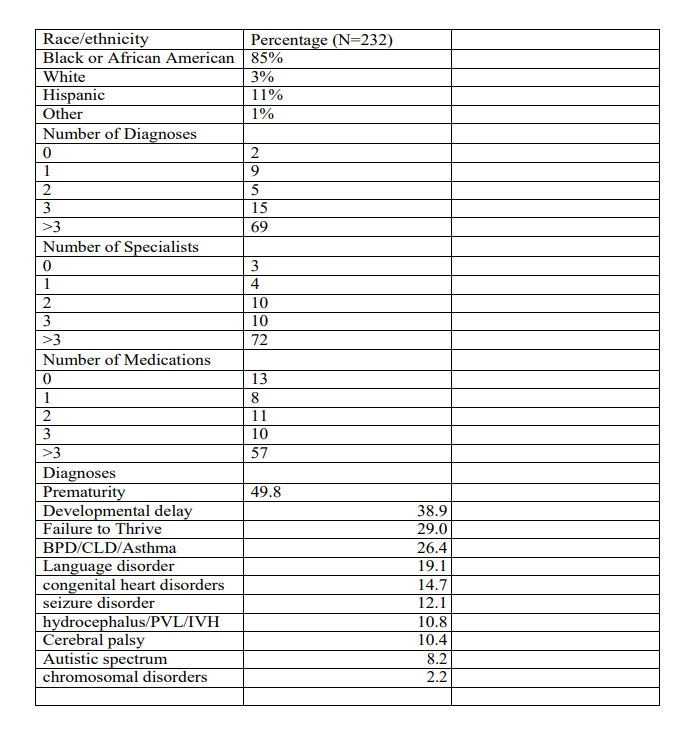Developmental and Behavioral Pediatrics: Developmental Disabilities
Developmental and Behavioral Pediatrics 7
614 - Quality of Life of Families with Children With Special Healthcare Needs
Publication Number: 614.402
- EC
Edith J. Chernoff, MD (she/her/hers)
Associate Professor - Department of Pediatrics
University of Chicago Division of the Biological Sciences The Pritzker School of Medicine
evanston, Illinois, United States
Presenting Author(s)
Background:
Approximately 15.6% of children in the US are classified as children with special healthcare needs (CSHCN) (1). They are an under recognized and understudied population. It has been generally accepted that CSHCN have worse health related quality of life (QOL) than their peers (2) Families have indicated that socioeconomic stresses worsen QOL (3) and family functioning is the best predictor of QOL. (4) While researchers have looked at QOL in families and in children with specific diagnoses, none have examined how parenting a young CSHCN affects family’s QOL.
Objective: We sought to determine how families of CSHCN viewed their QOL.
Design/Methods: We evaluated QOL in families with young CSHCN with physical, mental and/or developmental disorders who are seen in a primary care medical home for young CSHCN. Caregivers completed a survey rating their QOL on a Likert response scale. We used information from the children’s charts to assess diagnoses, age of patient at time of entry into program, number of visits attended and missed, number of team members who interacted with the patient.
Results:
During a 4 year period, 232 families completed a baseline survey. Analysis of the baseline data appears much more positive than anticipated. Over 75% of caregiver responded satisfied and very satisfied to all the questions. When caregivers reported only one outlier, it was most frequently physical/material well-being. Of the 44 caregivers who had more than one negative subscale ranking emotional well-being was the most frequent outlier. Only 10 caregivers had 3 or more outlying subsections, with 3 families responding as neutral, dissatisfied or very dissatisfied in all of the 5 scales.
Multiple logistic regression analyses were used to compare those who had at last one outlier subscale to those who had no outliers. We looked at independent variables but could not elucidate differences in families who had more negative answer. Caregivers rate their Family QOL as overwhelmingly positive and they are satisfied with their lives despite their struggles.
Conclusion(s):
Current studies of QOL in children with special needs and their families focus on function and pain or on the number of hours families spend caring for the CSHCN. They do not examine the family’s perspective on the child’s QOL or their family QOL. Studies of adults who are impaired physically show that these adults consistently assess their lives more positively than those involved in caring for them. It seems that QOL of families of CSHCN aligns more closely to those adults than to their caregivers. 
